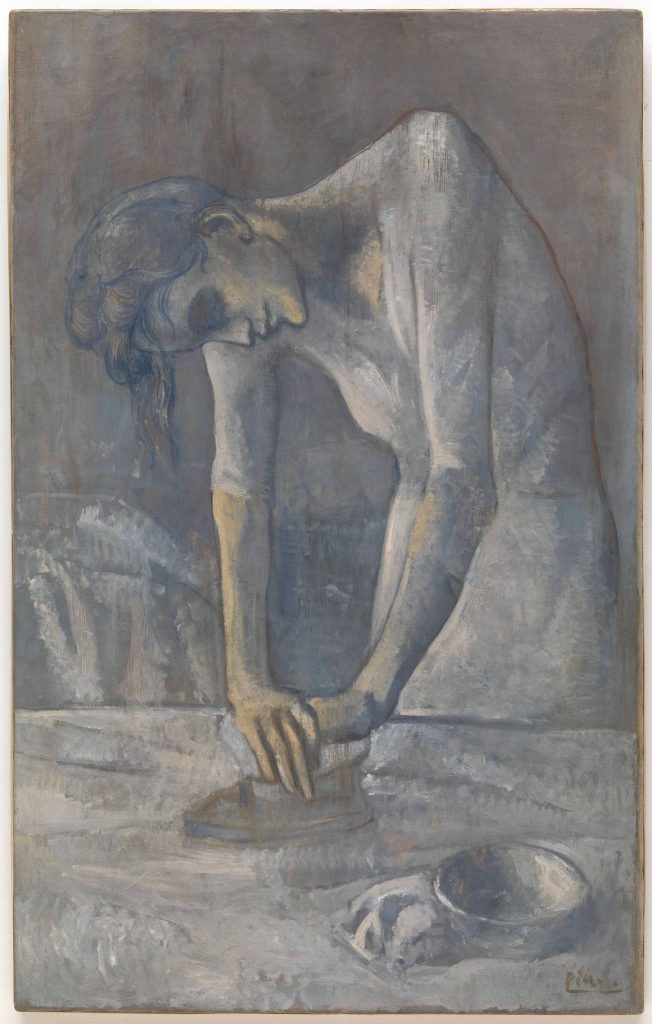There are many traditional art forms mysteries out there; I decided to write a short series of articles debunking some of the common myths.
The more we learn about great art and its creators, we discover more mysteries. Sometimes these mysteries are more convoluted and salacious than any soap opera on television. Still, we keep trying to solve them, especially if they involve theft. Often, the only people who know the truth have taken their secrets to the grave.
The Man under the Woman Ironing
The Man under the Woman Ironing is a painting discovered under prized 1904 Woman painting of Pablo Picasso Woman Ironing after a robbery attempt damaged the canvas. The second is an inverted image of a man with a mustache image. Scholars are obsessed by questions of whom the man was and if Picasso painted it. They have ruled out a self-portrait of Picasso.
The artist was only 22 years old and lives in Paris when he created a masterpiece Woman Ironing principle. It was from the Blue Period, which was dominated by dark themes in predominantly blue tones. However, he was always strapped for cash and often painted on his canvases.
Some experts believe that the brush strokes and the type of paint used on the hidden image confirm that Picasso painted it. But there is much debate about who is portrayed in the painting. It seems to be another artist, possibly Mateu Fernandez de Soto sculptor or painter Ricard Canals. However, the more experts researches, the more they disagree.
The Girl with the Pearl Earring
Despite all the theories and speculations, no one seems to know the identity of the woman in Johannes Vermeer’s famous 1665 painting Girl with a Pearl Earring. She turned to us with soft light shining on her young face and a large pearl hanging from his ear. She looks like she’s about to say something, but we have no idea about her. People are contemplating if she is Vermeer’s daughter or his lover, but it is possible it never existed in life, but it still attracts huge cloud anywhere it is seen.
Study by Candlelight
There is controversy surrounding Study by Candlelight whether this is a real painting by Vincent Van Gogh or a fake, as claimed by his nephew. It looks like a self-portrait of Van Gogh, but the lower third of the painting is unfinished and contains the Japanese kabuki strange character. The character was introduced in ink, not paint. There is also a question of why French accents do not appear in the inscription “Etude a la bougie,” meaning “study of candlelight” in French.
The painting was bought first by William Goetz, director of Universal Pictures, in 1948. At that time, the work had been authenticated, but Van Gogh’s nephew declared it fake soon after. Other art expert agreed with the nephew, beginning a decades-long conflict over the authenticity of the painting. In 2005, a book about Hollywood forger John Decker said that Decker purpose forged the artwork and tried to deceive Goetz into buying.
Lightning Strikes Twice
When restoring a masterpiece of Robert Reid, an American impressionist in the early 20th century, the art curator Barry Bauman was surprised to find that Reid had concealed under another painting of being restored. This hidden painting, dubbed in the garden, portrays a young woman sitting at a table outdoors who is reading while having tea. Many artists painted over an existing piece, but Reid had extended this second painting on the first end. No one can understand why Reid did that, and he is not alive to tell.
What we do know about Reid is that he was a gambler who died before the worst of the Depression, but he always struggled financially. Art experts speculate that it may not have liked his first picture, so tried to save money on supplies. Or it may have been an easier way to ship or store paintings.
Website : www.printoffice.com
